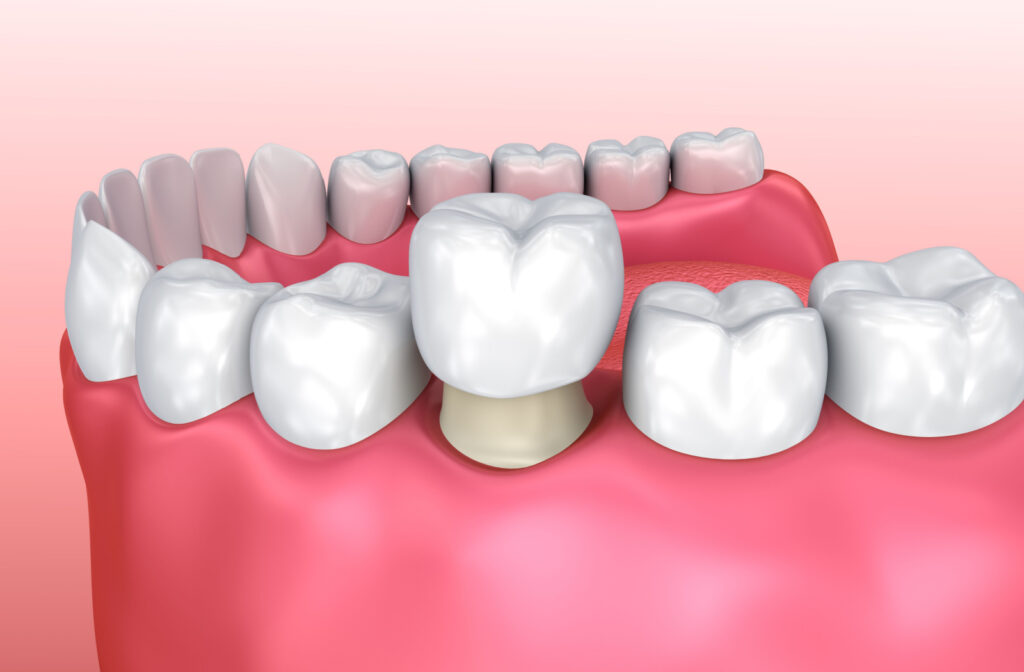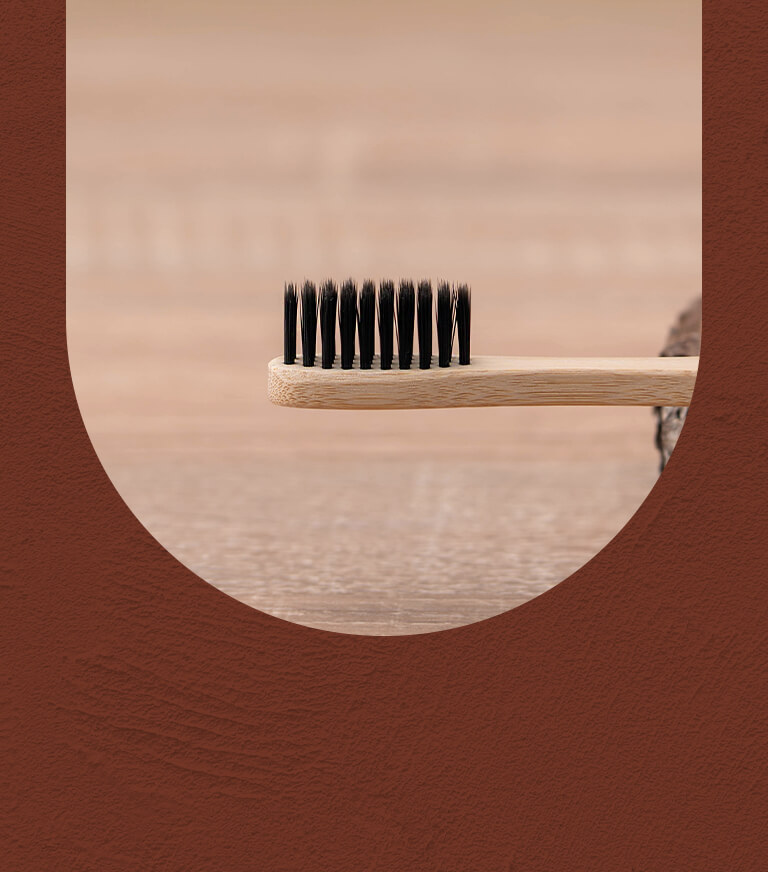A dental crown helps restore a tooth’s shape, size, and strength, and it can also improve its appearance. If you need a crown, understanding the process from start to finish can help you plan your schedule and feel prepared for your appointments.
The typical timeline for a dental crown is 2 separate visits spread over a few weeks. The final schedule depends on the type of crown you get and your specific dental situation, which we can assess during a routine dental checkup.
What Is a Dental Crown & Why You Might Need One
A dental crown is a cap that is placed over your tooth. You can think of it as a helmet that protects the tooth underneath. It covers the entire visible part of the tooth to restore its function and appearance.
We may suggest a crown for several reasons, including:
- To protect a weak tooth from a fracture
- To restore a tooth that is already broken or worn down
- To cover a tooth with a large filling
- To hold a dental bridge in place
- To cover a discoloured or misshapen tooth
- To cover a tooth after a root canal treatment
Do You Need a Root Canal for a Crown?
You don’t always need a root canal before getting a crown. If the tooth’s nerve is healthy, we can often proceed directly with the crown preparation. However, we may suggest a root canal first if there’s an infection or damage to the nerve.
The Traditional 2-Visit Crown Process
The most common method for a dental crown involves 2 appointments at our clinic. These visits are usually spread out over 1–3 weeks. This schedule gives a dedicated dental lab time to create a custom crown that fits your tooth.
Your First Appointment: Preparation & Impressions
This visit usually takes between 50 and 90 minutes. We prepare the tooth by removing any decay, which may involve getting tooth fillings if needed, and shaping it to make room for the crown. We also match the colour of your crown to your other teeth. Then, as part of a thorough process similar to a comprehensive dental exam, we take an impression so your permanent crown can be made with a precise fit.
You’ll leave with a temporary crown to protect the tooth in the meantime. The temporary crown allows you to eat and speak normally. It’s important to be gentle with it until your next visit.
Your Second Appointment: Place the Final Crown
When your permanent crown is ready, you’ll return for your second visit, which is often shorter. We remove the temporary crown and check the fit and colour of your new permanent one. After we cement it into place, we make final adjustments so that your bite feels comfortable.
Factors That Can Affect Your Crown Timeline
The time it takes to get a crown can vary. Several factors influence the schedule for your treatment.
Crown Material
Crowns can be made from different materials, such as porcelain, zirconia, or metal alloys. The material you and your dentist choose can affect how much your tooth needs to be prepared. For example, some materials require less tooth structure to be removed than others, which can influence your appointment time.
The Condition of Your Tooth
If your tooth has significant decay or damage, it might need more work before it’s ready for a crown, and in some cases, this may involve treatments like dental surgery. This extra preparation can add time to your first appointment. We always discuss the plan with you beforehand so you know what to expect.

FAQs About Getting a Dental Crown
It’s normal to have questions about the procedure and what to do afterwards. Our goal is to make you comfortable while restoring your tooth. Proper care helps your new crown last for many years.
Is it painful to get a crown?
We use a local anesthetic to numb the tooth and the area around it before we begin. You may feel some pressure, but you shouldn’t feel discomfort during the procedure. It’s common to have some temporary sensitivity afterward, which usually fades quickly.
How soon after getting a crown can you eat?
You can typically eat shortly after the procedure is complete. In some cases, we may suggest avoiding very sticky or hard foods for the first 24 hours. This gives the cement time to set completely.
How to Care for Your New Crown
Good oral hygiene, including proper brushing and flossing, is key to maintaining your crown and the tooth underneath it. You can treat it just like you would your natural teeth. With proper care, a crown can last for a long time.
- Brush your teeth twice a day and floss daily.
- Pay special attention to the area where the crown meets your gumline.
- Avoid chewing on hard objects like ice or popcorn kernels.
- Keep up with regular checkups and professional dental cleanings with your dentist.
Visit CHV Dental for Trusted Dental Care
At CHV Dental, our exams are designed to be clear, comfortable, and informative. We check for cavities, gum disease, bite issues, and more, and we always walk you through our findings and recommendations.
Whether it’s been 6 months or several years since your last checkup, we’re here to help you get back on track with no judgment.
If you have questions about dental crowns or want to book an appointment, contact our team today. We’re here to help you and your family with your oral health needs.


